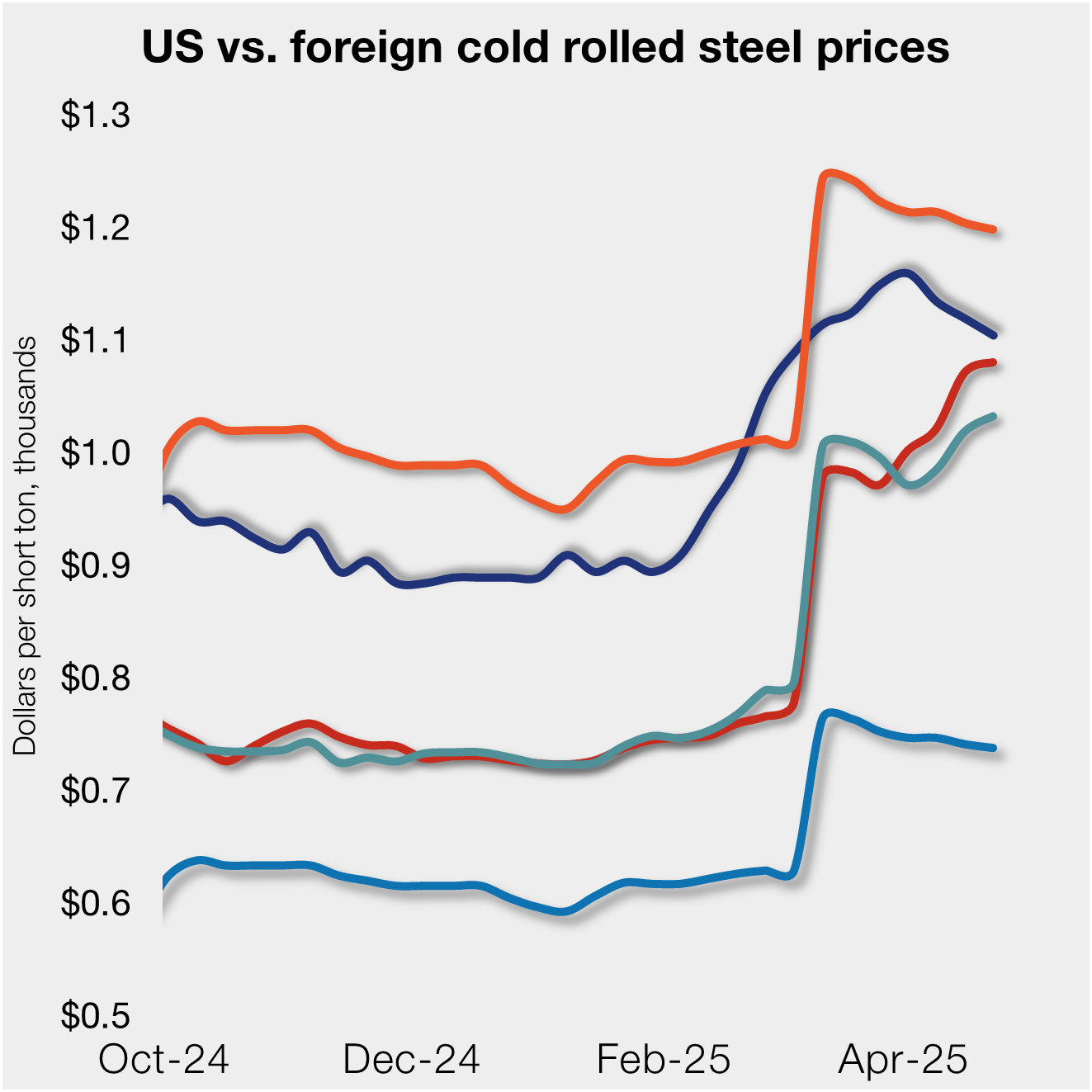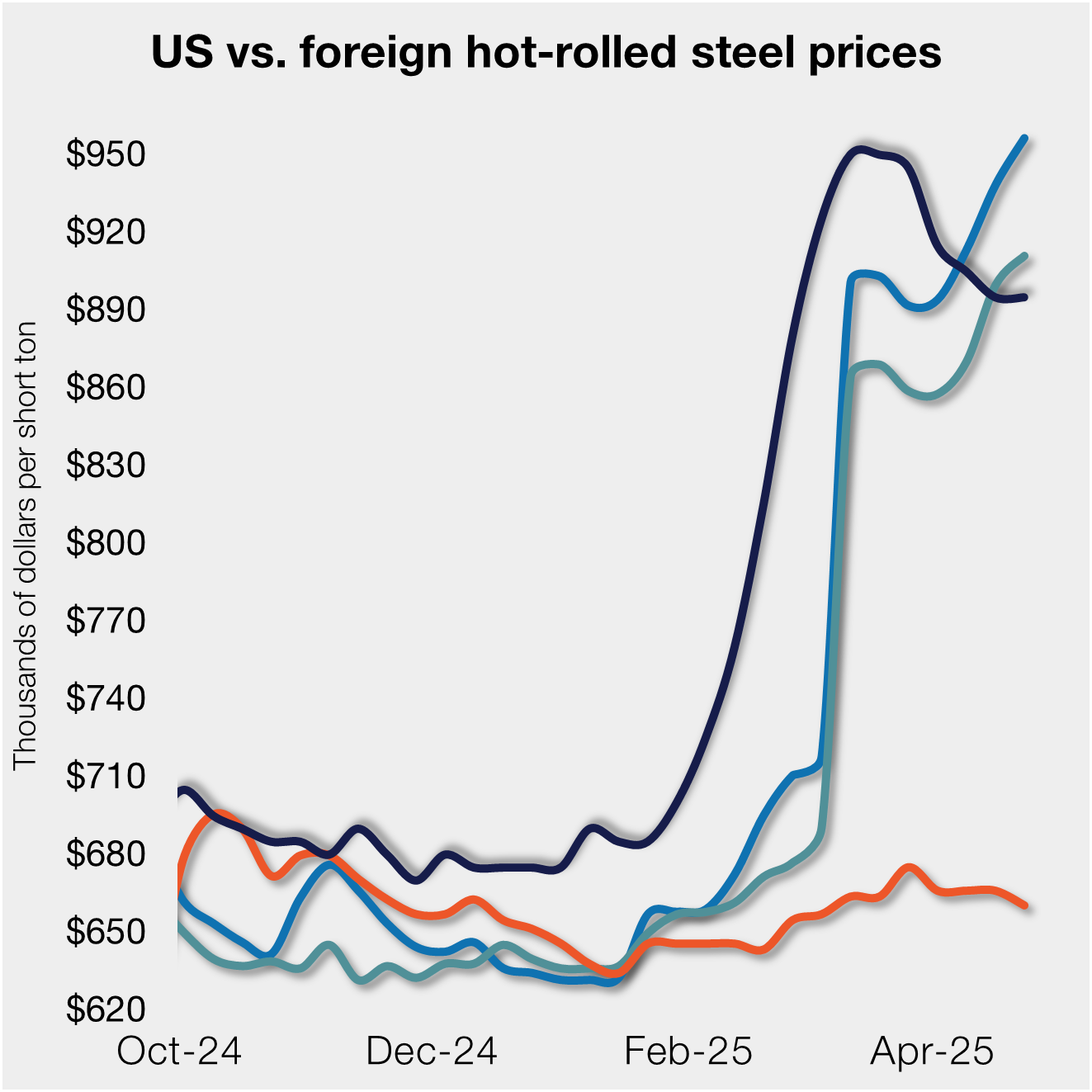Steel Products

As US-EU Steel Talks Speed Up, Public Details Sparse
Written by Laura Miller
November 1, 2022
The US and European Union are making good on their efforts to speed up global steel discussions.
US Trade Representative Katherine Tai and European Commission Executive Vice President Valdis Dombrovskis met on Oct. 30 for the second time in several weeks. At the forefront of their meeting were discussions about carbon intensity and overcapacity in steel and aluminum .
![]() Tai reiterated “the US commitment to pursuing a high-ambition global arrangement with the European Union,” to address those issues, the USTR office said in a statement.
Tai reiterated “the US commitment to pursuing a high-ambition global arrangement with the European Union,” to address those issues, the USTR office said in a statement.
No further details of the steel arrangement discussions were provided, however, and the USTR office did not respond to Steel Market Update’s request for additional information.
Kevin Dempsey, president and CEO of the American Iron and Steel Institute (AISI), spoke with SMU regarding the meeting of the two leaders and their efforts to address these difficult matters.
“We’re in a wait and see mode” on these talks, Dempsey said, noting there have been previous efforts to address global overcapacities in steel. But despite that, no concrete action has been taken, and overcapacity remains a problem.
Any arrangements need to consider that there is a big differential in carbon intensity between steel made in the US and Europe and in other parts of the world.
“I’m supportive of the administration’s efforts to work on these important issues, but you know I’m not ready to be optimistic. We’re waiting to see how much progress can be made,” Dempsey said.
“The goals are laudable, but it’s very important that we actually reach a result that will create effective, enforceable mechanisms that discourage the importing of steel that’s much higher in carbon intensity. … And that (we) actually put some type of penalty on countries that are exacerbating the global overcapacity crisis,” Dempsey noted.
Richard Chriss, president and international trade counsel for the American Metals Supply Chain Institute (AMSCI), pointed out to SMU that the acceleration of these steel talks raises several important questions. As Tai said earlier this year that a global sustainable steel arrangement would require the participation of other countries and economies, one major question is this: What additional countries have signed up for this global steel arrangement, if any? Additionally, what are the ‘deliverables’ expected from current US-EU steel talks and when will stakeholders be asked for input?
“While talks centered around the global sustainable steel arrangement appear to be one of the key focal points for the administration’s trade policy, these talks should complement and not substitute for an ambitious US trade policy that includes initiating and leading negotiations with our global trading partners to produce new job-creating market access opportunities for American manufacturers through commitments that are binding and enforceable,” Chriss stated.
By Laura Miller, Laura@SteelMarketUpdate.com

Laura Miller
Read more from Laura MillerLatest in Steel Products

US rig count up, Canada declines
Oil and gas drilling activity was mixed this week, according to Baker Hughes. US rig counts expanded for a second straight week, while Canadian activity continued its seasonal slowdown of eight consecutive weeks.

US, offshore CRC prices continue to diverge
US cold-rolled (CR) coil prices declined again this week, slipping for a third straight week. Most offshore markets did the opposite, moving higher this week.

S232 lifts EU HR price over US, Asian HR still well behind
Domestic hot-rolled coil prices were flat this week after dropping for four straight weeks. Most offshore markets bucked the trend and gained ground.

SMU Steel Demand Index dips into contraction
SMU’s Steel Demand Index has moved into contraction, according to late April indicators. The slowdown comes in response to growing tariff uncertainty after the index reached a four-year high in late February.

Nucor selects Fives Group for new galv line at CSI
Nucor Corp. has tapped Fives Group as its partner in designing and manufacturing the new continuous galvanizing line being added at its California Steel Industries (CSI) joint venture in Fontana, Calif.
